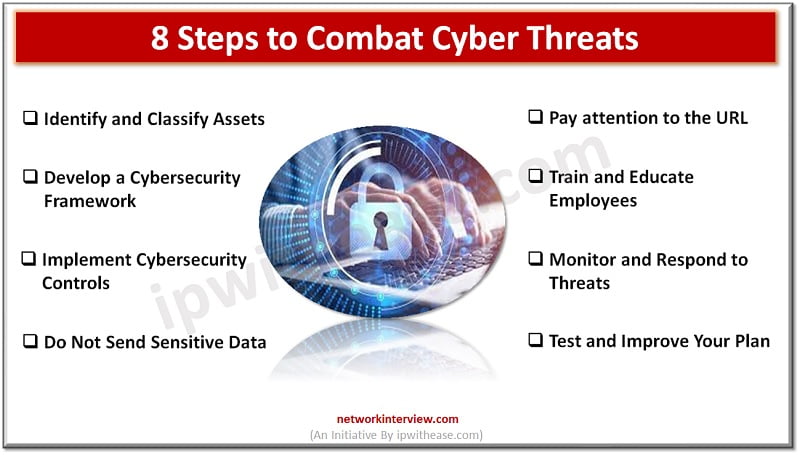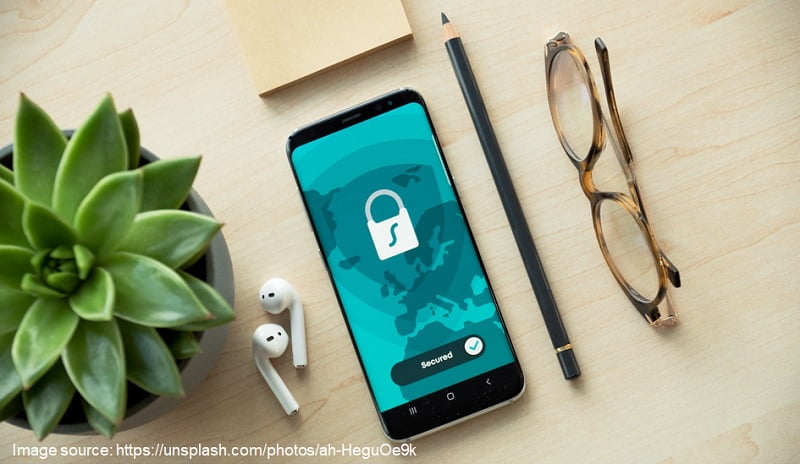
Empowering Business Resilience: 8 Steps to Combat Cyber Threats
Cyber attacks are becoming more common and sophisticated, which means businesses need to be more prepared than ever before. The COVID-19 pandemic has brought with it a rise in remote work, leading to an increased reliance on technology for business operations. As a result, cyber threats have become even more prevalent.
To ensure the resilience of your business against these threats, you need proper cybersecurity measures in place. In this blog post, we’ll explore eight steps that can help empower your business’s resilience against cyber threats and safeguard your assets from potential harm.
Steps to Combat Cyber Threats

Identify and Classify Assets
The first step in combating cyber threats is to identify and classify your assets. This means taking inventory of all the hardware, software, and data that your business uses. You need to know what you have before you can protect it — and picking the most suitable cybersecurity solutions will help you identify and avoid potential threats. This software also considers the potential impact of a breach or attack on each asset. What would happen if sensitive information were leaked? How much downtime could your business withstand?
Once you’ve identified your assets, classify them according to their value and importance to your business. This allows you to prioritize your cybersecurity efforts. Classifying assets helps you make informed decisions about where to allocate resources for protection and recovery efforts. Not to mention, make sure you’re not overspending on security measures for low-risk assets while neglecting high-value ones.
Develop a Cybersecurity Framework
Developing a cybersecurity framework is essential in combating cyber threats. It provides a structured approach to identify, assess and manage security risks across an organization’s systems and networks. Here are a few steps you must follow:
- Establish the scope of your cybersecurity program.
- Define the goals and objectives of your framework: These should be aligned with your overall business strategy and risk management policies.
- Create a risk assessment process that identifies potential vulnerabilities within your organization’s infrastructure: This involves identifying all assets that need protection, understanding their value, and assessing their exposure to threats.
- Implement controls that will mitigate identified risks effectively: These controls can include physical security locks or access control systems or technological solutions like cybersecurity software.
- Always monitor ongoing activities continually: This includes tracking incidents reported by employees or customers who may have experienced suspicious activity on company devices or accounts.
Implement Cybersecurity Controls
Once you have determined your cybersecurity framework, the next step is to implement security controls. These are measures designed to protect your organization’s assets from cyber-attacks. Here are some controls you should be aware of:
- Firewalls act as a barrier between internal networks and external networks. Firewalls analyze incoming and outgoing traffic based on predetermined rules, allowing or blocking them accordingly.
- Antivirus software scan files stored on local devices or transferred across networks in real-time to prevent malware infections.
- Encryption can be used to secure data-at-rest (in storage) or data-in-motion (during transmission). Encryption involves converting plain text into ciphered text using algorithms so that only authorized parties can access it.
- Access controls prevent unauthorized access to sensitive information. They enforce policies that dictate who has permission to view or modify specific resources within an organization’s network and limit those privileges when necessary.
Disaster recovery plans should be implemented as part of cybersecurity controls. It outlines procedures for resuming normal operations after an incident such as a natural disaster or cyber-attack occurred.
Do Not Send Sensitive Data
Never send sensitive data over email or any other insecure form of communication. This includes passwords, usernames, bank account details, and other confidential information. If you must share this type of data with someone, use a secure method of communication like an encrypted messaging service or a secure connection over the internet.
Be also aware of phishing scams. Phishing scams involve fraudulent emails that look like they are from a reputable source, such as your bank or email provider. The goal of these scams is to trick you into revealing your sensitive information. If you receive a suspicious email, do not click on any links or enter any sensitive data. Instead, contact the sender directly to verify that the request is legitimate.
Pay attention to the URL
Another way to protect yourself from cyberattacks is to be mindful of the URL (uniform resource locator) which you are visiting. For example, if you’re visiting a website that you trust, the URL should start with the https:// prefix. If the URL does not start with this prefix, it’s likely that the website is not legitimate.
Train and Educate Employees
One of the weakest links in any organization’s cybersecurity defenses is its employees. This is because human beings are fallible and can make mistakes that expose sensitive data to cyber threats. Therefore, it’s essential to train and educate your staff on how to identify potential threats and risks.
Training should include the identification of phishing scams, malware attacks, social engineering tactics, and more. Employees should also understand why these threats are so dangerous and how they can impact the company.
Furthermore, training should emphasize the importance of password hygiene, which includes creating strong passwords that aren’t easy for hackers to guess or brute-force attacks. They must also know to avoid sharing login credentials with others or leaving their devices unlocked when unattended.
Another critical aspect of employee education is helping them understand their role in maintaining a secure network environment. Staff members must be aware of security policies that govern access control measures like remote working protocols.
Continuous training and education for your employees can go a long way toward minimizing cybersecurity risk within an organization.
Monitor and Respond to Threats
Monitoring and responding to threats involves keeping an eye on your systems, networks, and devices for any suspicious activities that may indicate the presence of malware or other malicious software. One effective way to monitor threats is by deploying firewalls, intrusion detection/prevention systems (IDS/IPS), and antivirus software. These tools can detect potential breaches before they escalate into full-blown attacks.
However, monitoring alone is not enough. Responding promptly to threats is equally important in mitigating their impact. This requires having an incident response plan in place that outlines the steps to be taken when a breach occurs.
Your incident response plan should include procedures for containing the attack, identifying affected assets, notifying relevant stakeholders, and restoring normal operations as quickly as possible.
Test and Improve Your Plan
Once you have developed and implemented your cybersecurity plan, it’s time to test its effectiveness. Regular testing can identify vulnerabilities in the system before they are exploited by cybercriminals.
There are various methods of testing your cybersecurity plan, including penetration testing, vulnerability assessments, and tabletop exercises. On the one hand, penetration testing involves attempting to breach the system as an attacker would, while vulnerability assessments focus on identifying weaknesses in security measures. Tabletop exercises, on the other hand, involve simulating a cybersecurity incident and evaluating how well the team responds to it. This type of exercise identifies gaps in communication or areas where employees may need more training.
Regularly reviewing and improving your cybersecurity plan is essential for staying ahead of constantly evolving threats. It’s important to update policies and procedures as new risks arise or when changes occur within the organization.

In today’s digital age, cyber threats are becoming increasingly common and sophisticated. As a result, businesses need to take proactive steps to protect their assets from these risks.
Note that cybersecurity is an ongoing process that requires constant attention and improvement. Regularly reviewing your cybersecurity plan can help ensure its effectiveness against evolving threats. By prioritizing security measures within your organization while also fostering a culture of awareness among employees about the importance of protecting sensitive data – you will be able to reduce risk while building trust with customers.
Ultimately, it takes time and effort to build resilient defenses against cyberattacks but investing in these efforts now can prevent devastating consequences later on.
Continue Reading:
Tag:Security



